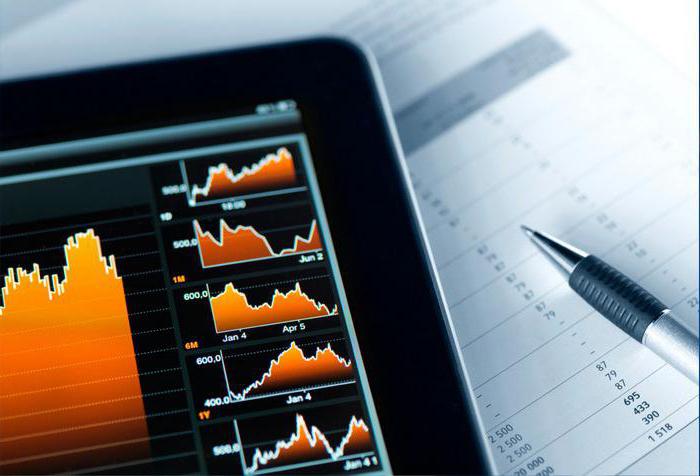One of the most important information sources, according to which certain managerial decisions are made in the organization, is financial reporting. The information specified in it is used when conducting a study of the enterprise. During it, the financial assets and liabilities of the company are evaluated. The cost at which they are reflected in the balance sheet has a significant impact on the adoption of certain administrative decisions. We will conduct further financial analysis of the assets of the company. 
General information
Key financial assets include:
- Cash on hand.
- Deposits.
- Deposits in banks.
- Checks.
- Investments in securities.
- Third-party holdings of control companies.
- Portfolio investments in securities of other enterprises.
- Obligations of other companies to pay for delivered products (commercial loans).
- Shareholdings or units in other companies.
The main financial assets allow you to characterize the property values of the company in the form cash flow and tools belonging to her. This category includes:
- National and foreign currency.
- Accounts receivable in any form.
- Long and short term investments.

Exceptions
This category does not include productive reserves and some means (fixed and intangible). Financial assets imply a valid right to receive money. Possession of these elements forms the possibility of receipt of funds. But since they do not form eligibility, they are excluded from the category.
Administration
Management of financial assets is carried out in accordance with a number of principles. Their implementation ensures the efficiency of the enterprise. These principles include:
- Ensuring the interaction of the asset management scheme with the overall administrative system of the organization. This should be expressed in the close relationship of the first element with the tasks, accounting, operational activities of the company.
- Providing multi-variant and flexible management. This principle implies that in the process of preparing administrative decisions on the creation and subsequent use of funds in the investment or operational process, alternative options should also be developed within the admissible limits of the criteria approved by the company.
- Ensuring dynamism. This means that in the process of developing and implementing decisions in accordance with which the financial assets of the organization will be used, the impact of changes in external factors over time in a particular market sector should be taken into account.
- Focus on achieving the strategic goals of the company. This principle implies that the effectiveness of certain decisions should be checked for compliance with the main objective of the company.
- Providing a systems approach. In making decisions, asset management should be seen as an integral element of the overall administrative system. It provides the development of interdependent options for the implementation of a particular task. The latter, in turn, are associated not only with the administrative sector of the enterprise. In accordance with these decisions, a financial asset is established and subsequently used for production and marketing and innovation management.

Cost
In the direct form, a financial asset is assessed after measures to collect data, examination of rights, market research, study of reporting and forecasts of the development of the enterprise. The traditional method of determining value is formed in accordance with the purchase or production price minus depreciation. But in situations where there is a fluctuation of indicators (drop or increase), the cost of funds may have a number of inconsistencies. In this regard, a financial asset is periodically revalued. Some enterprises carry out this procedure once every five years, others every year. There are companies that never do it. However, valuing assets is critical. It manifests itself mainly with:
- Improving the effectiveness of the administrative system of the company.
- Determining the value of the company during the sale (in whole or in part).
- Restructuring firms.
- Development of a plan for future development.
- Determining the solvency of the company and the value of collateral in case of lending.
- Establishing the amount of taxation.
- Making informed administrative decisions.
- Determining the value of shares in the sale of securities of the company in the stock market.

Important categories
A financial asset is considered as an investment in instruments of other enterprises. It also acts as an investment in transactions that in the future provide for the receipt of other funds on potentially favorable conditions. A financial asset that provides for the right to demand in the future money by agreement is:
- Bills receivable.
- Receivables.
- Amounts of debt on loans and bonds receivable.
Along with this, the opposite side acquires certain financial obligations. They suggest the need to make a future payment under the contract.
Ratios of financial assets
In the study of reporting and studying the results of economic activity of the company, a number of indicators are used. They are divided into five categories and reflect different aspects of the state of the company. Thus, there are coefficients:
- Liquidity
- Sustainability.
- Profitability.
- Business activity.
- Investment performance.

Net current financial assets
They are necessary to maintain the financial stability of the company. The net capital ratio reflects the difference between current assets and short-term debt. If the first element exceeds the second, we can say that the company can not only repay the debt, but also has the opportunity to form a reserve for further expansion of its activities. The optimal indicator of working capital will depend on the specifics of the company, its scale, sales volume, turnover rate of the refinery, receivables. With a lack of these funds, it will be difficult for the company to repay debts in a timely manner. With a significant excess of the net current asset over the optimal level of demand, they talk about the irrational use of resources.
Independence indicator
The lower this ratio, the more loans the company has and the higher the risk of insolvency. Also, this indicator indicates the potential danger of a company having a shortage of money. The indicator characterizing the company's dependence on external loans is interpreted taking into account its average value for other industries, the company's access to additional sources of debt funds, and the specifics of the current production cycle. 
Profitability indicator
This coefficient can be found for various elements of the financial system of the company. In particular, it may reflect the firm's ability to provide a sufficient amount of revenue relative to the current assets used. The higher this indicator, the more efficiently the funds are used.The rate of return on investment determines the number of monetary units that the company needed to make one ruble of profit. This indicator is considered one of the most important indicators of competitiveness.
Other criteria
The turnover ratio reflects the efficient use by the enterprise of all the assets that it has, regardless of the sources from which they came. It shows how many times during the year a complete cycle of circulation and production takes place, which brings the corresponding result in the form of profit. This indicator is quite different by industry. Earnings per share acts as one of the most important indicators affecting the market value of the company. It reflects the share of net income (in money) that falls on an ordinary security. The ratio of share price to profit shows the number of monetary units that participants are willing to pay per ruble of income. In addition, this ratio reflects how quickly investments in securities can make a profit.
CAMP assessment model
It acts as a theoretical basis for some financial technologies used in risk and return management for long- and short-term investments in stocks. The main result of this model is the formation of an appropriate ratio for the equilibrium market. The most important point in the scheme is that in the selection process the investor needs to take into account not all the risk of the stock, but only non-diversifiable or systematic. The CAMP model considers the profitability of a security, taking into account the general state of the market, its behavior as a whole. The second initial assumption of the scheme is that the investor makes a decision, taking into account only the risk and the expected profitability. 
Basic assumptions
The CAMP model is based on the following criteria:
- The main factors in assessing the investment portfolio are the estimated profitability and standard deviation for the time of ownership.
- The assumption of unsaturation. It consists in the fact that when choosing between equal portfolios, preference will be given to one that is characterized by greater profitability.
- Risk exclusion assumption. It lies in the fact that when choosing from other equal portfolios, the investor always chooses the one with the smallest standard deviation.
- All assets are infinitely divisible and absolutely liquid. They can always be sold at market value. In this case, the investor may purchase only part of the securities.
- Transactional taxes and costs are infinitely small.
- The investor has the opportunity to borrow and lend at a risk-free rate.
- The investment period is the same for everyone.
- Information is instantly available to investors.
- The risk-free rate is equal for everyone.
- Investors equally value standard deviations, expected returns and stock covariances.
The essence of this model is to illustrate the close relationship between the rate of return and the risk of a financial instrument.








